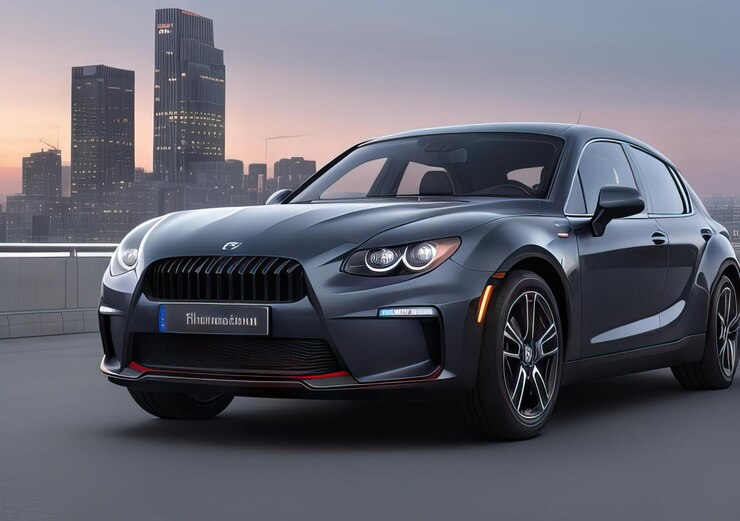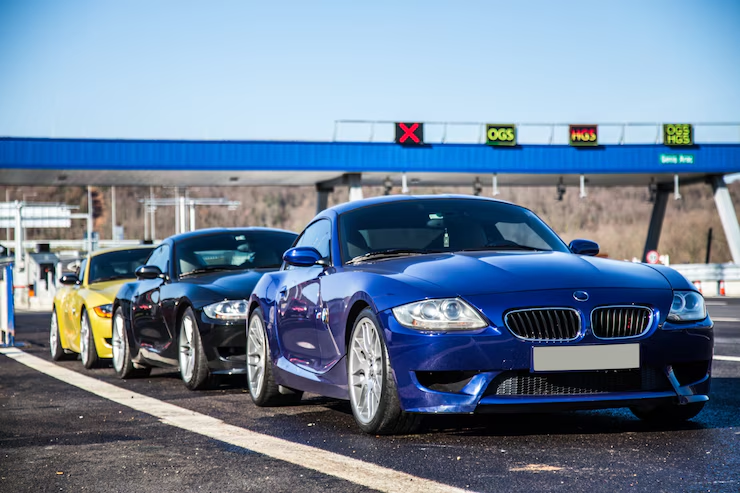Introduction
In the realm of luxury, exclusivity is the ultimate currency. Whether it’s haute couture, fine dining, or private aviation, the demand for personalization has transformed the landscape of high-end consumer experiences. The automotive industry, particularly its luxury segment, is no exception. Increasingly, affluent buyers are not just purchasing a vehicle—they’re commissioning a masterpiece that reflects their personality, values, and lifestyle. This trend, often encapsulated by the term “bespoke,” has become a defining characteristic of the luxury automobile market.This article explores the evolution, technology, and cultural significance of customization in luxury automobiles. From handcrafted interiors to one-of-a-kind paint finishes, we delve into how top-tier manufacturers are catering to the desires of the world’s most discerning drivers.

A Historical Perspective on Bespoke Automotive Craftsmanship
The concept of bespoke cars is not new. In the early 20th century, car manufacturers such as Rolls-Royce, Bentley, and Bugatti often delivered only the chassis and engine. It was up to the wealthy customer to hire a coachbuilder to design and assemble a custom body and interior. This practice established a precedent that equated automobiles with art and craftsmanship.As mass production took hold in the mid-20th century, bespoke craftsmanship became a niche offering. However, the last two decades have seen a resurgence of this tradition—now supported by cutting-edge digital tools and high-tech manufacturing capabilities. Automakers have revived the spirit of bespoke design, but with a modern twist: customers can now tailor every detail of their car through interactive digital configurators, virtual reality showrooms, and dedicated design teams.
The Rise of the Personalization Economy
Today’s luxury car buyers demand more than brand prestige—they want identity. In an age of hyper-personal branding and digital self-expression, owning a customized vehicle is a powerful extension of one’s image.Customization in luxury automobiles typically encompasses:
Exterior Design: Unique paint colors, two-tone finishes, custom wheels, carbon fiber accents, and bespoke badging.
Interior Appointments: Hand-stitched upholstery, personalized embroidery, exotic wood or stone trims, and individualized seat designs.
Technology Integration: Custom infotainment systems, tailored ambient lighting, and exclusive audio systems such as those by Naim or Burmester.
Performance Tuning: Special engine mapping, sport suspension setups, and unique exhaust notes.This movement has given rise to “personalization departments” within elite car brands. Rolls-Royce has its “Bespoke Collective,” Bentley offers “Mulliner,” Ferrari has “Tailor Made,” and Lamborghini boasts “Ad Personam.” These divisions are not simply aesthetic—they offer engineering customization, making every detail of a vehicle reflect its owner’s precise preferences.
Craftsmanship Meets Technology
One of the most fascinating aspects of bespoke automotive design is the seamless blend of old-world craftsmanship with modern technology. At Rolls-Royce’s Goodwood facility, wood veneers are still hand-finished by master artisans, while advanced 3D modeling tools allow designers to test interior layouts and visual aesthetics before production begins.For instance, Bentley’s Mulliner division offers over 100 paint colors, and if that’s not enough, clients can commission an entirely new hue—matched from anything from a favorite suit to a sunset photograph. These paints undergo rigorous UV and weather testing to ensure longevity and perfection.Lamborghini, on the other hand, integrates cutting-edge digital visualization tools in its Ad Personam studio. Clients can sit with designers and see real-time changes to their chosen model, from the Alcantara color of the dashboard to the stitching pattern on the steering wheel.
The Role of Culture and Identity
Customization is not just about aesthetics—it’s about cultural identity and emotional connection. In the Middle East, for instance, luxury car buyers often prefer white exteriors with gold or deep maroon interiors, symbolizing elegance and regional pride. In China, red interiors are popular due to their association with prosperity and luck.American luxury buyers often lean toward tech-enhanced interiors with all possible options, while European buyers tend to favor subtle, minimalist luxury. These preferences influence how automakers design their customization programs and regional offerings.Even within individual countries, personal history plays a role. A customer may request a particular shade of blue to match their alma mater’s colors, or embroidery of family crests into headrests—turning the vehicle into a mobile heirloom.
Sustainability and Ethical Luxury
A growing trend in luxury customization is the shift toward sustainable and ethical materials. Bentley now offers interiors made with ethically sourced wood and vegan leather alternatives. Rolls-Royce has introduced “technical fibers,” which resemble carbon fiber but are produced with environmentally friendly materials. Customers are increasingly asking for transparency about where materials come from and how they are produced.Ferrari and Aston Martin have also begun experimenting with sustainable paints and eco-friendly interior linings without compromising the plush feel expected in luxury cars.As more high-net-worth individuals focus on sustainability as a status symbol, luxury automakers are adapting their bespoke offerings to reflect these values.
Beyond Ownership: The Bespoke Lifestyle
For many luxury brands, the customization experience extends far beyond the vehicle itself. Rolls-Royce offers a “whispers” app—a private digital concierge for owners, providing access to exclusive events and art collections. Lamborghini’s clients might be invited to Italy to personally witness the assembly of their car, while Bugatti owners receive bespoke travel accessories that match their vehicle’s interior.Some automakers are partnering with fashion houses, watchmakers, and yacht builders to create cross-industry design experiences. Aston Martin has collaborated with Brough Superior to offer motorcycles that match the spec of their cars, while Bentley has teamed with Breitling to produce timepieces inspired by vehicle dashboards.This convergence turns car ownership into an ecosystem of luxury lifestyle choices—where every element, from driving gloves to garage design, is customized to the client’s taste.
Challenges of the Bespoke Model
While customization is a powerful tool for differentiation, it presents challenges:
Complex Production Logistics: Unique builds can slow down production lines and require additional quality assurance.
Higher Costs: Bespoke elements significantly increase vehicle cost—not only due to materials, but also the labor and testing involved.
Resale Value: Hyper-personalized cars may be harder to sell in the secondary market, as unique specifications may not appeal to future buyers.
Brand Risk: Some customers request changes that conflict with a brand’s image or design ethos, forcing automakers to draw a line between customization and compromise.
To balance creativity and practicality, brands establish design limits while offering clients ample room for personalization.
The Future of Bespoke Luxury Vehicles
The future of bespoke customization in luxury automobiles lies in further integration with AI, biometrics, and immersive technologies. Some predicted developments include:
AI-Generated Designs: Using machine learning to suggest design options based on lifestyle, social media, or historical preferences.
Biometric Tuning: Seats, climate control, and even music adapting to heart rate or mood.
Augmented Reality Configurators: Allowing clients to “see” their car in their driveway before finalizing the order.
NFT-Based Ownership Certificates: Linking bespoke design elements to unique digital tokens to establish provenance and exclusivity.
As we move toward an era of electrification and autonomous vehicles, the interior will become even more central to the luxury experience. Custom lounges, personalized lighting themes, and wellness features will transform cars into rolling sanctuaries.

Conclusion
Luxury is no longer just about opulence—it’s about personal narrative. In a world where consumers seek meaning, experience, and distinction, bespoke automobiles represent the ultimate canvas for self-expression. Whether through hand-stitched monograms or digitally visualized fantasy concepts, customization is redefining what it means to own a luxury car.The bespoke beauty of luxury automobiles tells a story—one where the driver is not just a customer but a co-creator, and the car is not merely a machine but a reflection of identity, aspiration, and artistry.

